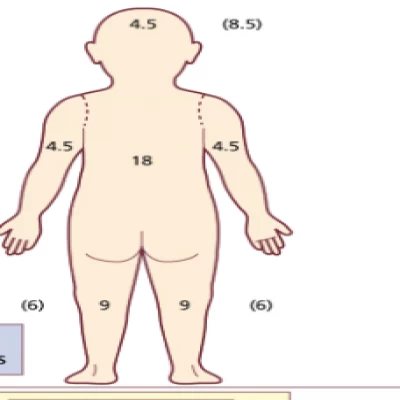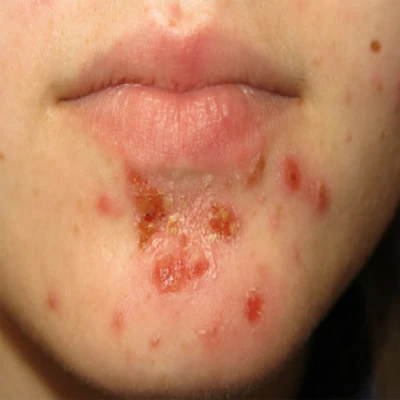مجلات علمية

Allergic Contact dermatitis
It is a dermatitis, belonging to the fourth type of hypersensitivity reactions, which depends on a cell mediated hypersensitivity reaction in the skin. It is an inflammatory skin rash resulting from skin contact with an allergen or penetration of the allergen to the skin.[1]
Causes
The fourth type of allergy occurs due to the penetration of an allergen into the skin, which provokes the immune system, and in reaction, contact dermatitis occurs in the form of dermatitis.[1]
Mechanism
It is considered one of the most important types of allergies and one of the most common, and it includes two stages
1- The first is the allergic stage, in which the allergen is exposed for the first time and then it is identified and the production of T cells that will respond to this substance later expand
2- The second stage is the sensitivity stage, where the body is exposed to this allergen for the second time, and the immune system begins to interact with it, causing sensitivity, through the integration of many cells and chemicals such as immune cells, including T cells that are sensitive to that substance in particular, as well as some substances such as cytokines and chemokines.[2]
Symptoms
Allergic contact dermatitis appears as a red, itchy rash when an allergen comes into contact with the skin and penetrates it (fig 1).[3]
Prevalence
The research that was conducted revealed that this type of allergy is more prevalent in females than males, and the percentage of its appearance increases with age and reaches its maximum between 60 and 70 years of age. Research has shown that sensitivity increases to nickel sulfate and some perfumes.[4]
Types
There are two types of contact dermatitis
Irritant: By contact between the skin and a non-immune irritant
Allergic: which is through contact between an allergen that provokes the immune system, and the skin becomes inflamed, and itching occurs, It is what we are discussing in this article.[5]
Diagnosis
Diagnosis is usually made through medical examination and the history that tells the patient, in the case of suspected bacterial infection we can use potassium hydroxide, by performing a patch test and allergy tests for the patient to confirm the diagnosis.[5]
Treatment
The treatment of allergic contact dermatitis includes many medications and therapeutic materials, as well as some important patient behaviors to avoid its occurrence
Stay away as much as possible from the allergen and do not deal with it
Use cold compresses during allergies to reduce symptoms and treat oozing lesions
The use of topical corticosteroids such as triamcinolone 0.1% or desonide at the expense of the place being treated, which has shown great success in the treatment of allergic contact dermatitis and is used in the irritant form as well and is successful
Although antihistamines are weak in treating this type of dermatitis, they may give some relief.[5]
Complications
Many complications can occur when allergic contact Dermatitis remains untreated due to the constant itching that causes scratches in the skin and the scratches may become deep and cause bacterial and fungal infections, as well as when healing scars appear in the place of deep skin wounds.[3]
References
Gober, M. D., & Gaspari, A. A. (2008). Allergic contact dermatitis. Dermatologic Immunity, 10, 1-26
Kimber, I., Basketter, D. A., Gerberick, G. F., & Dearman, R. J. (2002). Allergic contact dermatitis. International immunopharmacology, 2(2-3), 201-211
https://www.mayoclinic.org/diseases-conditions/contact-dermatitis/symptoms-causes/syc-20352742
Bordel-Gómez, M. T., Miranda-Romero, A., & Castrodeza-Sanz, J. (2010). Epidemiology of contact dermatitis: prevalence of sensitization to different allergens and associated factors. Actas Dermo-Sifiliográficas (English Edition), 101(1), 59-75
Usatine, R., & Riojas, M. (2010). Diagnosis and management of contact dermatitis. American family physician, 82(3), 249-255





.webp)
